When I was pregnant, I was given a checklist to help me prepare for baby’s arrival. It was very detailed, but I felt so overwhelmed. There were so many things that I knew nothing about and I still had to buy so many things.
Part of that list was a breast pump! Didn’t even know how to use them, what the different kinds are, why there’s such a thing as manual and electric, and even single and double. If you’re anything like me, it was just all too confusing! Thinking back, I wish there was a guide on how to choose the best breast pump for you. And that instead of relying on the recommendation of family and friends, I read all about it.
Do you need a breast pump?
When picking the best breast pump for you, you first have to think about why and how often you will be expressing milk. It can be that you are not able to directly breastfeed. It may be that there is a medical condition or in case of premature babies.
It can also be because you will be separated from your baby due to work or school (or maybe when you want to have date night with your partner). And when you need to increase your milk production due to low supply.
Now, how often do you intend to use the breast pump? Will you only be away for a few hours or will it be longer (in case you are working or studying full-time)? Or will you even be exclusively pumping?
A typical pumping session will take about 10-15 minutes per breast.
Here are some considerations:
- For stay at home moms or moms that work part-time who plan to express milk occasionally, you might want to consider a single electric pump (that can also be battery-operated) or a manual pump. This is good if you will be away for a few hours like on date night, and for keeping an emergency stash in the freezer.
- For those who will be returning to work or school full-time, it means that you will be away from your baby for a longer period of time. You might want to consider a double electric pump especially if time is of the essence and you need to pump more than once a day. Otherwise, if its a little more flexible, a single electric pump will be fine.
- For those who need to establish and maintain milk supply, in case your baby is unable to nurse after birth, you might want to consider a hospital grade pump. You will be expressing milk more frequently, and this also goes for those who will be exclusively pumping.
How much are you willing to spend on a pump?
For sure, electric pumps cost more than a manual pump.
Since there is a risk of contamination, don’t borrow, share, or buy a used pump for personal use. Milk can get into the motor since there is no barrier between the tubing and milk collection kit. Even if you replace and sterilise the tubing, breast shield, and bottles, you cannot sterilise the motor. A sure way to tell if milk has leaked into the tubing is if you see any sign of mould. This is gross as this can go into your expressed milk.
Like anything else, breast pumps also wear out in time and the average lifetime is approximately the same with the length of its warranty. So if you borrowed a pump, it may already be showing signs of wear and it might affect your milk production. What’s worse is if you break anything, then you’d have to replace it, so it’s worthwhile to buy a new one to avoid all the headache in the first place.
On the other hand, hospital grade pumps can be rented from a hospital or local breastfeeding groups. You just need to buy the milk collection kit of the pump that you will hire for hygiene reasons.
An important thing to do is check with your health insurance if they can cover the cost of buying or renting a breast pump.
What is the difference between closed system and open system pumps?
There has been a lot of discussion around this to see which is better. I have seen buy, sell, and swap groups for breast pumps, where used open system pumps are also being posted. Since people are looking for a good deal and maybe due to lack of awareness, it is important to know the difference as you decide on getting the best breast pump for you.
Basically, closed system breast pumps have a barrier in between the tubing and motor pump. It prevents milk from leaking into the tubing and protects your expressed milk from outside air drawn through the tubes. This is considered to be more hygienic and the tubes don’t require cleaning or sterilising.
This kind of system was first used in hospital grade pumps since it is meant to be shared by multiple mothers and they cannot risk any bacteria or virus contaminating the system. Nowadays, there are closed system breast pumps meant for personal use. It will never hurt to check if it is meant for multiple users in case you are still considering borrowing or buying used ones.
On the other hand, open system breast pumps do not have a barrier in between the tubing and milk collection kit, so the chances are high that expressed milk particles can enter the tubing. This can often go unnoticed until mould starts to grow in the tubing.
This then puts your expressed milk at risk of contamination since the air drawn into the pump has been exposed to mould, which leads to the possibility of mould growing in the pump motor. So it is important to wash, sterilise and air dry the tubes before your next pumping session. And to be safe, I think you should replace the tubing once mould has grown.
How do electric pumps and manual pumps differ?
With a manual breast pump you manually create the suction by squeezing and releasing the handle. They are lightweight, convenient, quiet, and affordable. If you will only pump occasionally or want a back up breast pump, this can work for you. It also feels more natural since you can control the suction.
However, it can tire your wrist out after a while and you can collect more milk using an electric pump.
An electric breast pump has a motor which generates the suction on the nipple to draw out milk from your breast. This works best if you plan to express milk regularly and in a short amount of time. They are heavier, noisier, and more expensive than manual pumps but they are worth the price.
It greatly decreases the time you have to pump (and we know how precious time is) and you can get more milk than a manual pump.
In case you’re wondering, pumps with a let-down function are helpful for older babies.
Not to confuse you, there are various kinds of electric pumps:
- Single pump – Single pumping is when you express milk from one breast at a time. This is better for occasional use.
- Double pump – Double pumping is when you are capable of expressing milk from both breasts at once. This takes getting used to, yet it is very helpful if you intend to pump frequently and want to save time.
- Hospital grade pump – They are designed to establish and maintain milk supply. This is best if your baby is premature, medical conditions exist, or you are exclusively pumping.
What breast shield size works best?
The 24mm is the standard breast shield size that comes with most breast pumps. Now, the best way to check if you are using the correct size is to look at how your nipple fits into the breast shield when expressing milk. It should move freely and easily without rubbing the sides.
In summary, while the number of choices in the market can be daunting, when you pick the best breast pump for you, start using it as soon as you can. This should be way in advance before you return to work or school, or leave your baby with another person. Offer your baby a bottle as soon as your milk supply is well-established so that they won’t refuse a bottle later on.
Again, consider why you are expressing in the first place, how often you intend to use the breast pump, and your budget. Time to get your own breast pump!
I hope this has been helpful as you pick the best breast pump for you. I would love to hear your experience in choosing the best pump, as well as in using breast pumps. Leave your comment below.
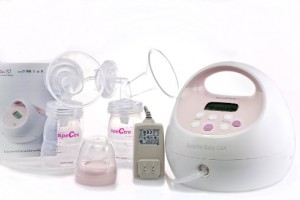
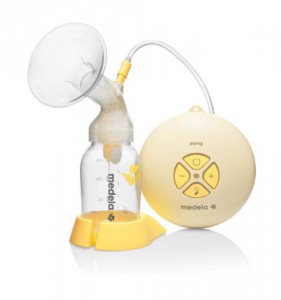


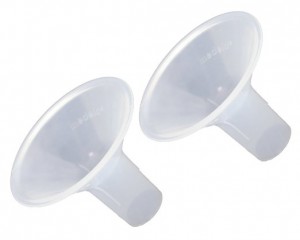

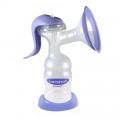
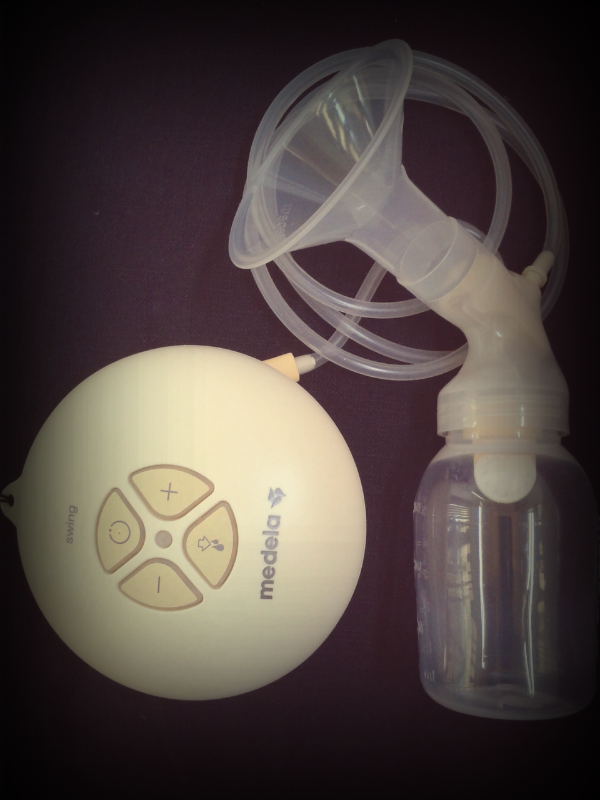
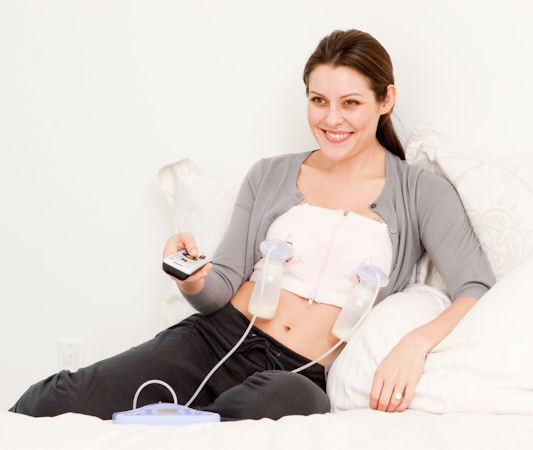
What a great informative article on breast pumps! I have the Medela style breast pump I was able to get free through insurance and it was really high tech! I found that at first I didn’t get as much out, but after time, I could pump more and more. It was very useful for the emergency times when I was out. I know some people like to avoid pulling out the breast in public, so they pump before they leave the house and bring a bottle or two. I think it’s okay because the milk is good for a couple hours. I didn’t know all this info about open and closed systems. I definitely had to clean and sterilize my pump a lot. What do you think is the best schedule to pump when you are working a full time job?
Thanks Maria! Great to know that the Medela breast pump was very useful to you! I loved using it too and I got so much more out of it as compared to a manual pump. When you’re working with a full-time job, you will most probably have to work around your breaks to pump, hence a double electric pump works best if you are really pressed for time and need to pump more than once a day.
When breastfeeding in public, its wonderful that there are so many nursing covers available in the market nowadays as options.
I enjoyed reading this even if I am way past the child bearing age. You did a great job of convincing me that breastfeeding is best for baby. Choosing the right breast pump is definitely important in helping you reach your breastfeeding goals. I’m sure this will be very helpful to new mothers in making their breastfeeding experience more enjoyable. Wishing you more success!
Glad to hear that, Joy! Breast milk is indeed the best food you can give to your baby. It has the nutrients and anti-bodies they need. Picking the right breast pump is just one of the ways to help mothers reach their breastfeeding goals. Breastfeeding is such a lovely and priceless experience that you can share with your baby.
I love your site! I wish I would have come across it years ago when I was still breastfeeding. With all the controversy around this topic, this is such a breath of fresh air. I also enjoyed reading your thoughts on lactation food. I did trial and error on several products. And I have to say that Mothers Milk saved my supply with my second child!
Thanks Mandy! It’s quite unfortunate that people make it more controversial than it should be. There’s just so much fuss about moms breastfeeding in public, when they’re just really feeding their hungry baby. Glad to know that Mother’s Milk Tea worked for you! Cheers!